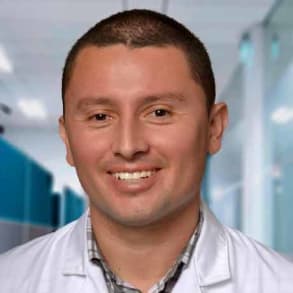Daniel Gallego-Perez, Ph.D., extends regenerative medicine technology, called Tissue Nanotransfection (TNT), to the treatment of diabetes. Dr. Gallego-Perez explains how TNT can be used as a solution for reprogramming skin tissue into brown adipose tissue for the treatment of obesity. Brown adipose tissue, or brown fat, is one of two types of fat in humans and other mammals. Sometimes called “good” fat, its primary function is heat regulation and several studies suggest it also plays a role in weight regulation.
Oh, hi, my name is Daniel, and I'm an assistant professor in biomedical engineering. The general surgery today I would like to share with you some of the world we have been doing in my lab wanted to repair and regeneration using the concept of surgery programming, which is almost like playing with alchemy but with the cells in your body. So I will be discussing strategies that we have developed to convert the skin tissue into insulin producing tissue for the treatment of diabetes, or to convert the skin tissue into brown a deposit issue, which is the good kind of fat for the treatment of obesity. So a few years ago, we developed a groundbreaking technology teaching on the transaction, or TNT, to control the skin tissue plasticity in vivo by the use of nano channels, which are this really tiny conduits with a diameter that's about 100 to 1000 times his mother than that of a human hair. So what we have here is a silicon based chip with nano channels, which can be used to deliver reprogramming genes or signals into skin cells in a highly controlled manner, and the whole procedure takes only about 100 milliseconds. So, depending on the nature of the reprogramming gene or a signal that is used, that skin cell can be converted into another cell type. For example, a new dawn or a blood vessel cell or a pancreatic islet cell essentially using the skin as a bio reactor to grow. Other teachers that could potentially be used to support therapies for the white bar area of conditions. So with funding we got recently from the National Institute of Diabetes and Digestive and Kidney Diseases, we will explore the use of this TNT technology for the development of local sensing, an insulin producing tissue in the skin for the treatment of insulin dependent diabetes. Uh, this is work that is being done in collaboration with Dr Geeta, Castor, Ohio State and Dr Mira Mira at University of Chicago. The goal here, then, is to convert the skin in tow. Better select issue to be able to control blood glucose levels more effectively from the skin in diabetic patients. Pilot studies in diabetic mind show that the skin can be converted into glucose, sensing an insulin producing tissue. As you can see in this micro grafts to the right. Moreover, when we treat the American minds with TNT, we can significantly improved Simic control for up to 11 weeks. As you can see in this chart below again, this is achieved by, ah, one time TNT treatment off the skin, which only lasted about 190 seconds. Finally, this funding will also support studies in collaboration with Dr Stanford from us. You, where the goal is to convert the skin tissue into brown. A deposition, which is the good kind of fat, brown, adipose tissue or bad. It's of interest to us because it is known to help control weight gain or metabolic health. So, of course, it could potentially be uses a therapeutic target for the treatment of obesity. Again, pilot studies indicate that the antique and in those changes in the skin of mice, which are consistent with brandy position specific functionalities. As you can see in these micro grafts to the right and in mice being felt, a high fat diet thesis TNT treatment helped to control weight game very effectively, as you can see in this chart below. And that's all I had to share with you today. Uh, stay tuned for more developments, of course. Stay safe. Everyone by
Related Presenters
